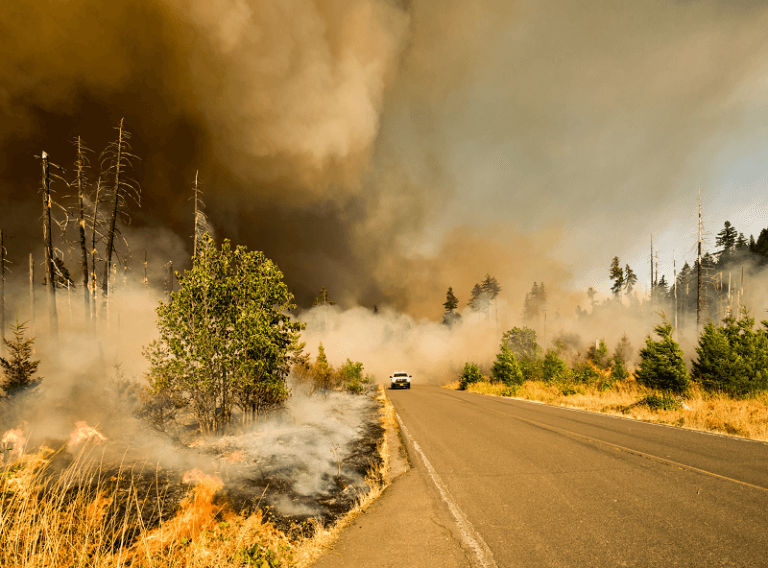
How to prevent wildfires from starting
It’s crucial to first determine your level of risk. Risk maps, drawn by California state scientists, are created using a computerized model that considers multiple factors including terrain and vegetation, as well as past fires. Risk maps are available here. However, never assume that because your area is not labeled as high-risk, that fire could not strike.
Those who live in the urban/wildland interface are always at the greatest risk. Nevertheless, everyone can benefit from some simple safety precautions and procedures.
Most essential is to maintain a “defensible space” around your home and outbuildings. Fire will use shrubbery, decorative trees and long grass as a bridge between the blaze and your structures. A defensible space is a specially planned area around your home that provides plenty of maneuvering space for firefighters, serves as a barrier to impede wildfires from getting to your home, and prevents fires originating in the home from spreading into the wild. A defensible space incorporates the careful selection of plantings and their placement as a strategy to decrease the spread of fire.
In addition, you should always make note of, and report, dangerous activity in your neighborhood such as campfires, fireworks, and carelessly discarded smoking materials. No, you are not being a nosy neighbor! You could be saving yours, and your neighbors’ property… and maybe even their lives.
Do not overlook small things that can become big problems. For example, there is a documented case of a devastating wildfire caused by simply leaving a vehicle running while stopped in tall grass. The outside temperature of a car’s catalytic converter can reach 750 F, which is enough to quickly ignite dry grass or vegetation.
Another documented wildfire case actually involves litter as the cause. When sunlight refracts in a glass bottle carelessly tossed outside, it can become a magnifying glass, igniting highly combustible materials such as dried grass and leaves.
To make sure your home is as safe as it can be, request a home safety audit from your local fire department. The safest, easiest fire they will ever fight is the one that they prevent. The fire department will likely have reference material for you to take and study, and may have a program to provide an inspection of your property for advice on how to improve your defenses.
Finally, remember the words of Smokey the Bear: “Only YOU can Prevent Forest Fires.” When the fire danger is high, play by the rules! No matter how clever, how prepared, or how careful you are, accidents happen.
What to do in the event of a wildfire
Pay attention to, and believe, public safety officials when they recommend that you evacuate! Far too many injuries and deaths were preventable, if only residents had evacuated early.
Keep a current video inventory of your personnel belongings and general state of your home. It will not prevent loss, but it will help you get back to normal much faster and to a comparable pre-fire condition. Store the video off-site.
Build and maintain a “go-bag” to take with you if you do need to evacuate. Include prescription medications, a change of clothing, toiletries, food and water, and comfort items for your children. Keep a list of what you need to add to the bag in the bag, so you are not second-guessing yourself under the stress of an approaching wildfire. At the first sign of fire danger that could conceivably reach your neighborhood, pack that bag and go.
About Warren Burns
How to Prevent Wildfires author Warren Burns has more than 30 years of experience in firefighting and community protection including experience as a firefighter and an Assistant Fire Chief / Fire Marshal in the public sector. He has extensive experience managing all aspects of a fire department to meet the expectations of the community being served. He is a Certified Fire Protection Specialist (CFPS), a Certified Fire Plans Examiner (CFPE) and a Certified Fire Inspector (CFI). He is a past Board Member of the Washington State Association of Fire Marshals and past Legislative Director of the Washington Association of Fire Chiefs. Warren is a member of NFPA and IAFF.